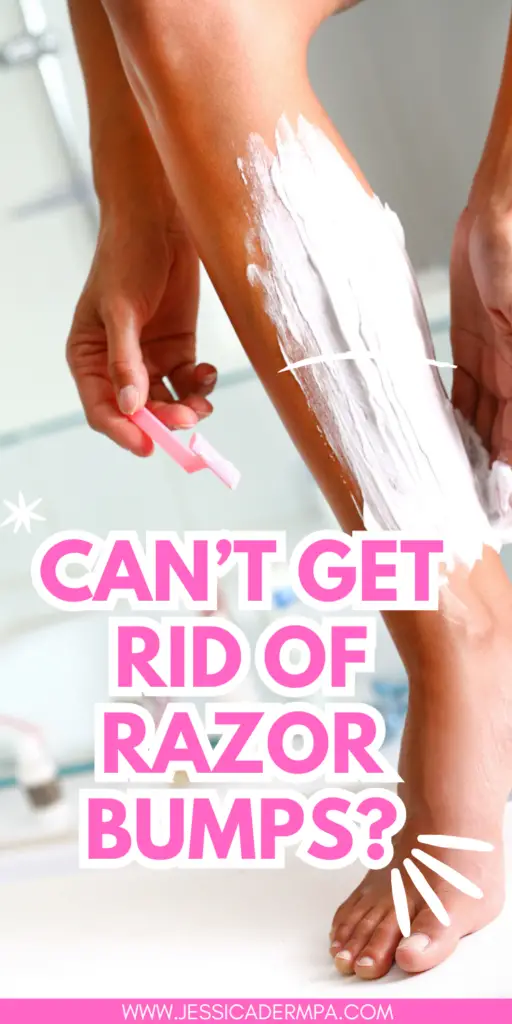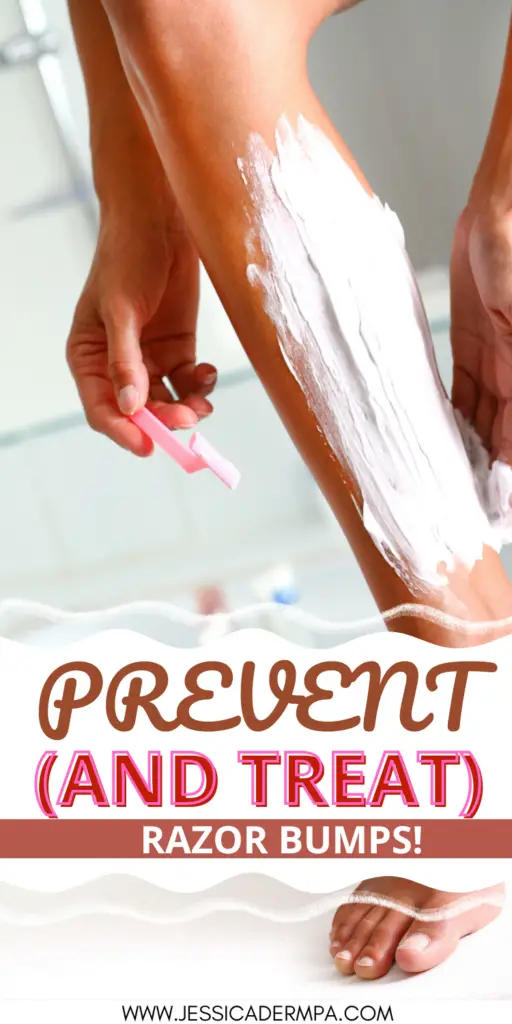Razor bumps can leave someone feeling like they have two choices: live with out-of-control hair or stay red and irritated forever. Fear not there are other options! First, let’s talk about what are razor bumps, and why are they happening. The medical term for razor bumps is folliculitis. Folliculitis is inflammation of the hair follicle, which is more commonly caused by shaving too close to the skin. It can also occur after waxing or plucking. There are several different types of folliculitis but for the purposes of this article, I am going to discuss the non-infectious type of folliculitis which is also the most common. Are you ready to dive in and finally figure out what you can do to treat razor bumps? Okay, let’s go!
Related: Unwanted Hair: Electrolysis or Laser Hair Removal
Antibacterial cleanser
Topical antibiotics are the first-line treatment to treat folliculitis caused by shaving. Yes, you can purchase these products over the counter! My suggestions are depending on where the razor bumps are located and the sensitivity of your skin. What do I mean by sensitive? If you are prone to eczema or dry itchy skin then you have sensitive skin. If razor bumps are the worst thing that has happened to your skin and you are not prone to eczema and are not normally allergic to scented products then for this purpose we are not classifying you with sensitive skin. Here are my recommendations for folliculitis based on body location and sensitivity risk:
1. on the face, neck, or underarms with sensitive skin: Clear Paula’s Choice Daily Skin Clearing Treatment 2.5% BPO
2. on the face, neck, or underarms without sensitive skin: CeraVe Acne Foaming Cream Cleanser 4% BPO
3. on the rest of the body with sensitive skin: Differin Daily Deep Cleanser 5% BPO
4. on the rest of the body without sensitive skin: Panoxyl 10% BPO
What do all of these products have in common? They all include benzoyl peroxide as the active ingredient. This means that they have the possibility to bleach clothing, sheets, or towels. So make sure to not dry off with anything fancy!
Permanent hair removal
Folliculitis is caused by inflammation of the hair follicle remember? So what if we removed the hair follicle altogether!? Permanent hair removal is the only definitive treatment option and you have two options based on the color of the hair. Dark-colored hair can be removed with either laser hair removal or electrolysis. Light-colored hair can only be removed with electrolysis. Permanent hair removal solutions can be pricey but may be worth it in the long run if this is a recurrent problem. Pricing will vary based on a number of factors. Some of these factors include the location of the area you want to be treated, the coarseness and density of the hair, how many treatments are necessary, and other factors such as where you live.
These hair removal options can also be painful! Speaking from experience, laser hair removal can feel like you are being hit with a rubber band over and over again. With either laser hair removal or electrolysis you should anticipate needing several treatments before your skin is silky smooth and you never have to treat razor bumps again. Some people may need maintenance treatments once a year or sometimes even more frequently!
A prescription-strength medication may be needed
For more severe cases of folliculitis, you may need a prescription-strength topical antibiotic or maybe even an oral antibiotic. If your condition is not improving after a few days of using an antibacterial wash, or if it is worsening then you should discontinue and be seen by a medical provider so they can properly assess your condition. Hopefully, these solutions for treating and preventing are helpful for most if not everyone reading. Have you had success with benzoyl peroxide washes in the past when using them with the goal to treat razor bumps? If so, comment below and let us know what product you used!
*Disclaimer: Opinions expressed are solely my own and do not express the views or opinions of my employer. Information on this website is for education and entertainment purposes only. Content is my opinion. It is not substituted for your own doctor’s medical care or advice. One should not make any health or medical-related decisions based in whole or in part on any content on this site. Content is not intended to replace the services of a licensed, trained health professional. Content may not apply to you as an individual. Although I will update my website with current information, this website is not a definitive guide to dermatology.




View comments
+ Leave a comment